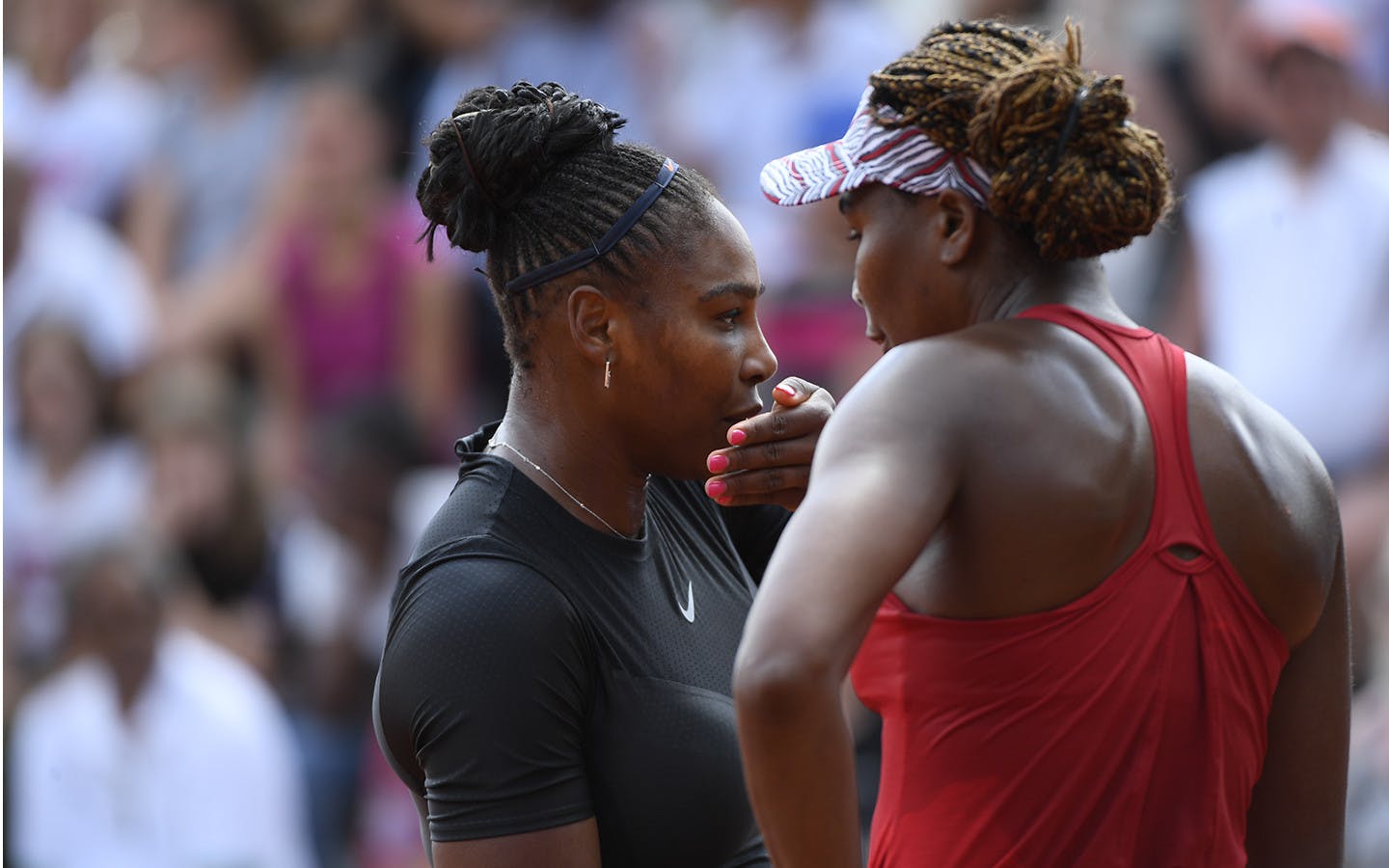Read more
Venus and Serena reunite for victory

Hail the Williams sisters, but is it farewell to the Bryan brothers partnership?

The Williams sisters are back as a superstar doubles pairing, but will we ever see the iconic Brothers Bryan play together again? The 40-year-old American twins, Mike and Bob – easily differentiated on court as a right-hander (Mike) and a leftie (Bob) – have contested a record 76 consecutive Grand Slam tournaments since 1995, racking up 16 titles, but, for the first time ever at a Slam, Mike took to the courts without his brother. With compatriot Sam Querrey filling in for Bob, who suffered a hip injury in the final at Madrid, Mike didn’t feel the joie de jouer and the pair lost to British siblings Ken and Neal Skupski. Victory in Madrid would have put the Bryans back to No.1 in the world rankings, but, without his brother, Mike has said he is ready to hang up his racquet. "If Bob can't come back then I will have to figure out if I want to keep doing it without him," he said. "It's much more fun when we're doing it together and it's felt a bit lonely this week. It's like I'm missing half of myself. We are a package deal and that's one of the reasons we've been playing so long. If he can't play any more I'd probably shut it down too.”
A secret preparatory weapon, rarely disclosed by players, is situated in the subterranean players’ facilities under Court Suzanne-Lenglen: the Salon de Coiffure, or tournament hairdresser, whose services are available exclusively available for players and coaches. Here, in a room with one basin and three mirror stations, Audrey Laforge washes, cuts and blow-dries hairs, fixes buns and braids – and, in the case of Benoit Paire, offers one-off emergency colour correction. “He came in just a few minutes before he went on court,” she revealed of her role in transforming his platinum blonde into a more distinguished silver grey before his appearance on Wednesday on Court Philippe-Chatrier.
Part of Audrey’s competition-ready salon repertoire involves head massage, and players often book in for the relaxing therapy shortly before they are due on court. Attuned to players’ superstitions, she is also poised with her scissors and comb to trim a barely discernible millimetre from the hair of a well-known Grand Slam champion to preserve his lucky rituals. She is too discreet to name her regular, mostly male clients, but eagle-eyed observers might notice visitors include Justine Henin, French women’s doubles player Sherezad Reix, and Maria Sharapova’s coach.
Now here’s a fact of superb serendipity for RG2018, the centenary of the death of the legendary pilot after whom Roland-Garros is named. Famously, in 1913, he became the first man to fly non-stop across the Mediterranean Sea. Monsieur Garros took off from the French Riviera in his monoplane and landed seven hours, 53 minutes later in Tunisia, in the town of Bizerte – the very birthplace of Malek Jaziri who on Thursday sought to create history of a different sort by becoming the first Tunisian man to reach the third round on the Paris clay since Mustapha Belkhodjia in 1963. To do so, he had to beat Richard Gasquet, yet it was the Frenchman who flew through to the next round.
Grand Slam groundskeepers are obsessive by nature, entrusted as they are with the business of providing an exemplary playing surface for the world’s elite players. Like Wimbledon’s grass, the clay of Roland-Garros is tended with a meticulousness that inspires awe. The crew who prepared the venue’s 32 courts (including the training complex) dedicate two or three days per court. The distinctive red clay is actually the final layer, finely ground brick or terre battue. It is shovelled onto the court’s surface, smoothed and compressed with a motorised roller, sprayed with water, and then repeated several times. As per tradition, Court Philippe-Chatrier is the last to be made ready for competition. This year, Malek Benyahia, 68, who has worked here for 31 years, assessed the surface and frowned. He had found a tiny divot or small hole in his inspection. The court was torn up, and the work began all over again.
L’affiche, the Roland-Garros poster, is a unique tradition that puts the French Open at the heart of international culture. For the last 37 years, the FFT have invited a contemporary artist to create a poster. Past tournament creators include Joan Miro (1991), Antoni Tàpies (2000), Sean Scully (2001) and Arnulf Rainer (2008). The 2018 edition by Fabienne Verdier is striking both for its depiction of the energy of a bouncing ball but also for it being the work of the first ever French artist commissioned to design the official poster. Parisian-born Verdier has used her local affiliation to conjure her image, and sounds mightily like a poet in describing it. “For me, Roland Garros evokes those first warm days that herald the arrival of summer in Paris, when the intense light of May and June makes the ochre clay sparkle. As the sun races across the sky, the courts turn from amber to tobacco, from saffron to sepia, from ochre to red, from sienna to brown. During every rally, the balls collect this multicoloured dust and, like comets, leave enchanting lines of energy in their wake.”